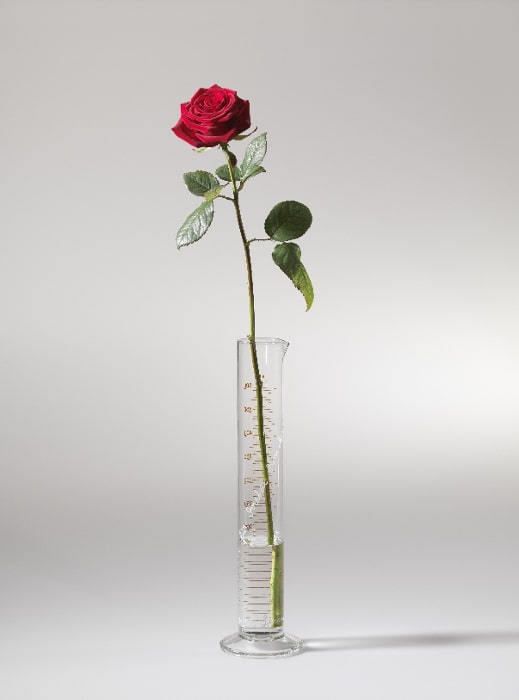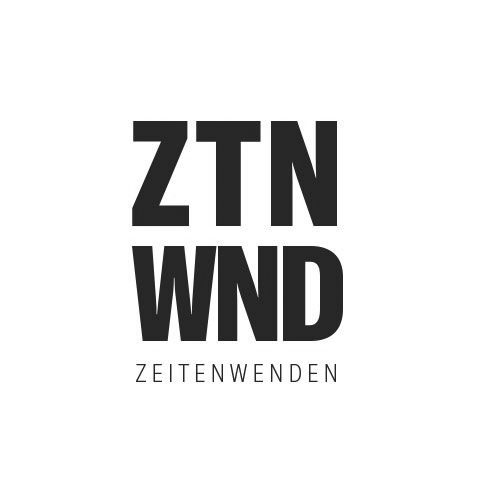From Saturday, 10 May 2025, the summer exhibition of the Modern Art Collection at Schloss Herrenchiemsee will present over 50 works by international artists whose work explores fundamental democratic values such as freedom, equality, self-development and human dignity. Masterpieces from the Modern Art Collection, ranging from classical modernism to the present day, are complemented by installations. Since 2013, the Bavarian State Painting Collections have been organising the Königsklasse exhibition series in the unfinished shell rooms of the north wing. The exciting dialogue between works of art and architecture creates a unique setting for the exhibition theme.
Image above: Joseph Beuys, Rose for Direct Democracy, 1973, Bayerische Staatsgemäldesammlungen, Sammlung Moderne Kunst in der Pinakothek der Moderne, Munich, donated to the Sammlung Moderne Kunst in 2008. Photo: Bavarian State Painting Collections, Haydar Koyupinar © VG Bild-Kunst, Bonn 2025
„Can you still do it?“
The title of the exhibition quotes the tech rap band Deichkind. Their song of the same title uses imagery to describe our accelerated society. It is a communal, unifying ‘you’ that deals with one of the most pressing questions of our society: our relationship to democracy. How motivated are we to continue defending it? How exhausted are we as a democratic society? In view of the constant threats and undermining of democracies through populism and extremism, through terror and war, there is a consensus that we must do something for democracy. The once hard-won values of leading a self-determined, free life in this form of government are often vague and difficult to grasp or have become all too self-evident.
Against this backdrop, 50 major works from the Modern Art Collection are presented in ten thematic sections, supplemented by a number of loans that provide an approach to the values of democracy. The exhibition thus refers to the Constitutional Convention, which took place on Herrenchiemsee in August 1948 and laid the foundations for the German constitution. The exhibition ‘The Will to Freedom and Democracy’ is permanently dedicated to it in the Old Palace.
The tour begins and ends with Joseph Beuys, one of the most outstanding and colourful figures in post-war German art. His ‘Rose for Direct Democracy’ (1973) stands for the direct participation of everyone in politics. Beuys’ influence on international artists such as Andy Warhol and John Baldessari as well as on the Düsseldorf Academy’s environment, such as Sigmar Polke and Inge Mahn, is also thematised in the exhibition. Mahn’s ‘Balancing Towers’ (1989), a new acquisition from 2024, are only held together by a rope – if the balance falters, they both fall. They symbolise the last section of the ‘BALANCEAKT’ exhibition: the freedom of the individual ends where the freedom of others is restricted. Democracy can only succeed through participation and involvement and must be lived as a process; solidarity supports it.

Human dignity, which is enshrined in Article 1 of the German Basic Law, is of central importance. The value of the individual goes hand in hand with the fundamental rights of freedom, equality, justice and solidarity. The right to free self-development becomes particularly clear in the creative process; artistic forms of expression often demonstrate this in a playful way and always with conviction. The van de Loo Children’s Forum, an initiative founded in 1970 by Munich gallery owner and patron Otto van de Loo, invites all visitors to get creative in the ‘CREATIVITY AND PLAY’ section.
The earliest exhibited works from the so-called Classical Modernism period were created during the Weimar Republic, a heyday of free and diverse artistic creation. The works of Expressionism by Karl Schmidt-Rottluff and Ernst-Ludwig Kirchner, for example, are exemplary of this. The twelve-year National Socialist regime marked an immeasurable turning point. Symbolic images that react to this shock make up a large part of the works in this exhibition and are shown in the ‘PAIN AND SHOCK’ section. Works by Henry Moore, Francis Bacon and Ida Applebroog in the ‘WOUNDS AND FRACTURES’ room vividly demonstrate that the experience of inhumanity during the Nazi era was not limited to Germany. The figurative imagery of Anselm Kiefer, Jörg Immendorff and Gerhard Richter, protagonists of German post-war art, reveals what has been repressed in society. Rosemarie Trockel, Inge Mahn and Maria Lassnig set important accents in terms of feminist perspectives and the expansion of materials. The internationally renowned artist Sheila Hicks, who has worked on all continents during her 70-year career, is designing her own space at Herrenchiemsee Castle, which will allow the public to experience the unifying potential of her art. Thomas Schütte will be using the historic staircase. His works can be understood as reactions to contemporary society, in particular to themes such as power structures, alienation and the complexity of human relationships.
Artists (selection):
Francis Bacon, John Baldessari, Max Beckmann, Joseph Beuys, Lisa Brice, Deichkind, Lucio Fontana, Günther Förg, Sheila Hicks, K. H. Hödicke, Jörg Immendorff, Asger Jorn, Anselm Kiefer, Ernst Ludwig Kirchner, Maria Lassnig, Henri Laurens, Inge Mahn, Henry Moore, A.R. Penck, Pablo Picasso, Judith Reigl, Gerhard Richter, Thomas Schütte, Rosemarie Trockel, Andy Warhol u.a.
Curated by Verena Hein and Oliver Kase
PUBLICATION
The accompanying exhibition catalogue (Hirmer Verlag, German/English edition) includes essays by Aleida Assmann, Herfried Münkler and Andreas Spickhoff as well as interviews with Deichkind and Sheila Hicks and statements by public and non-public figures – with the question: ‘How can culture and art contribute to strengthening the values of democracy?’
Voices from the publication:
‘Art can make a contribution to a democratic society if it enables exchange at eye level between people who do not meet in everyday life, or who do not meet on an equal footing. In the best case scenario, a sense of togetherness is created that is based solely on collective feeling and therefore somehow on humanity. I think this feeling is necessary for a society, especially a democratic one.’
Juri, politics and economics student
‘Diversity is at the heart of democracy. In the free expression of opinion, in people who live and shape democracy and in the dialogue with the state and society. I am impressed, for example, that people with and without disabilities are part of an ensemble in a theatre in Munich. The plays are described for blind people and translated into sign language for deaf people. An inclusive programme is also being implemented for this exhibition. Participation and involvement must be just as possible in art and culture as in politics and society.’
Verena Bentele, President of VdK Germany and Chairwoman of VdK Bavaria
‘How free a society is can also be measured by how free the arts are within it. (…). Culture is the space of emotions, of articulation and of touching our senses, the space of the physical and the visible as well as the symbolic and, within this, also of the religious and the ideological. This is why it can – much more than politics can – facilitate normative consensus and collective agreement on values. Because individualities unfold and express themselves in it, culture is the place of differences, their sharpening and softening at the same time. In precisely this way, however, it creates the foundation of elementary commonalities and constantly revitalises it, which is a prerequisite for successful democracy (without having to be politically instrumentalised). Just as little life succeeds without culture, so little democracy succeeds without it!
Wolfgang Thierse, former President of the Bundestag
WHEN?
Opening: Saturday, 10 May 2025, from 10 am to 5 pm
Exhibition duration: Saturday, 10 May – Sunday, 12 October 2025
WHERE?
Herrenchiemsee Palace
83209 Herrenchiemsee
How to get there
Via the A8 motorway (Salzburg-Munich) – exit Bernau – to Prien am Chiemsee. At the roundabout before Prien, follow the signs (Chiemsee or Königsschloss) to the (paid) car park.
There are regular boats from Prien/Stock to Herreninsel. Timetables for the Chiemsee railway and the Chiemsee boat service can be found at www.chiemsee-schifffahrt.de.






